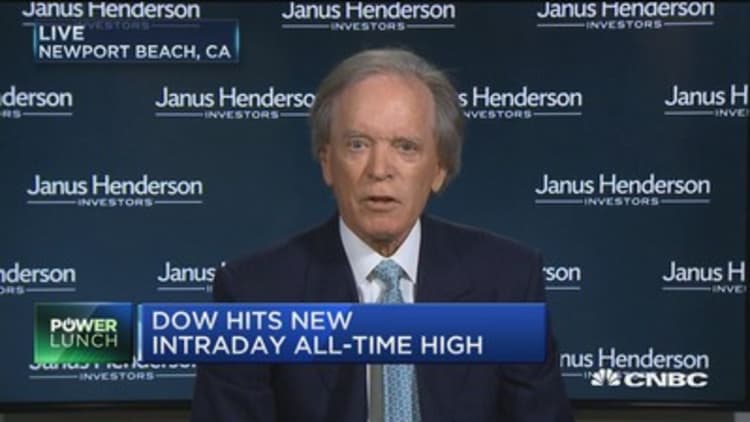
The Federal Reserve released a hawkish statement on Wednesday, but it's doubtful the central bank will ultimately be able to reach its goal, noted bond investor Bill Gross told CNBC on Wednesday.
The Fed is maintaining its projection for a federal funds rate at 2.1 percent in 2018, according to the chart that has become known as the "dot plot." It also indicated it will begin the process of unwinding some of its $4.5 trillion balance sheet this year.
"I would think fed funds rate can go no higher than 1.5 to 1.75 percent over time given these current conditions, given nominal GDP at 4 percent or less, given inflation at 2 percent or less," the portfolio manager for Janus Henderson said in an interview with "Power Lunch."
"I think that the Fed can't follow through with their dot plan and I think that the Fed can't follow through with what they're suggesting in terms of the sell-backs in the Treasury market. But ultimately that's their plan and I think the market should begin to take notice of that," he added.
According to information released Wednesday, the cap level of the balance sheet roll-off will start at $6 billion a month for the level of principal payment proceeds from Treasurys it will let run off without reinvesting. The remainder will be reinvested.
The Fed will increase that cap level at a pace of $6 billion each quarter over 12 months until the cap reaches $30 billion a month.
The central bank also approved its second rate hike of 2017, as expected, bringing the new range to 1 percent to 1.25 percent. The rate is currently at 0.91 percent.
Gross believes that if the terminal rate winds up near 3 percent to 3.25 percent, based on where the economy is right now, that could induce a recession.
"The Fed as the global central bank, if it intends to raise and if it intends to sell back into the market like it suggests, would put pressure upward pressure on the dollar," he said, "and that is a consideration that must be taken into account by the global central bank."
In this environment, Gross suggests investors focus on high-paying dividend stocks that are consumer related
"An investor simply has to realize that the days of double digits are over and that under this scenario and the Fed's mild, perhaps significant tightening posture as evidenced by this statement, dividends are going to be key going forward."
— CNBC's Jeff Cox and Christine Wang contributed to this report.
Watch: Gross on fiscal policy and slow economic growth




